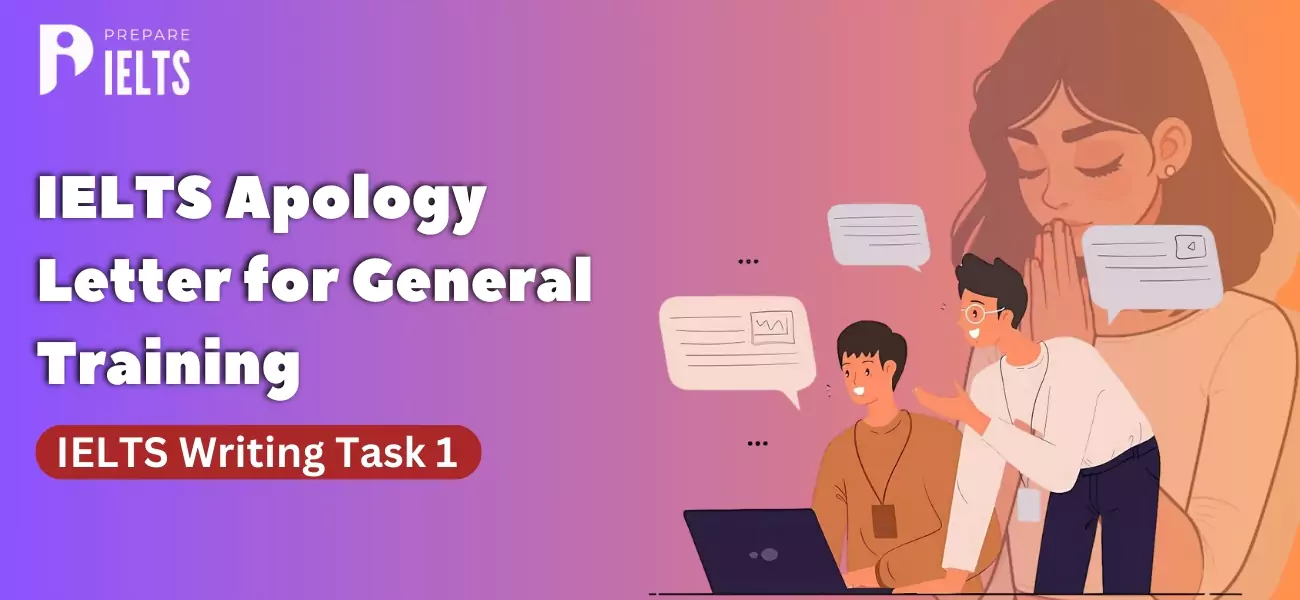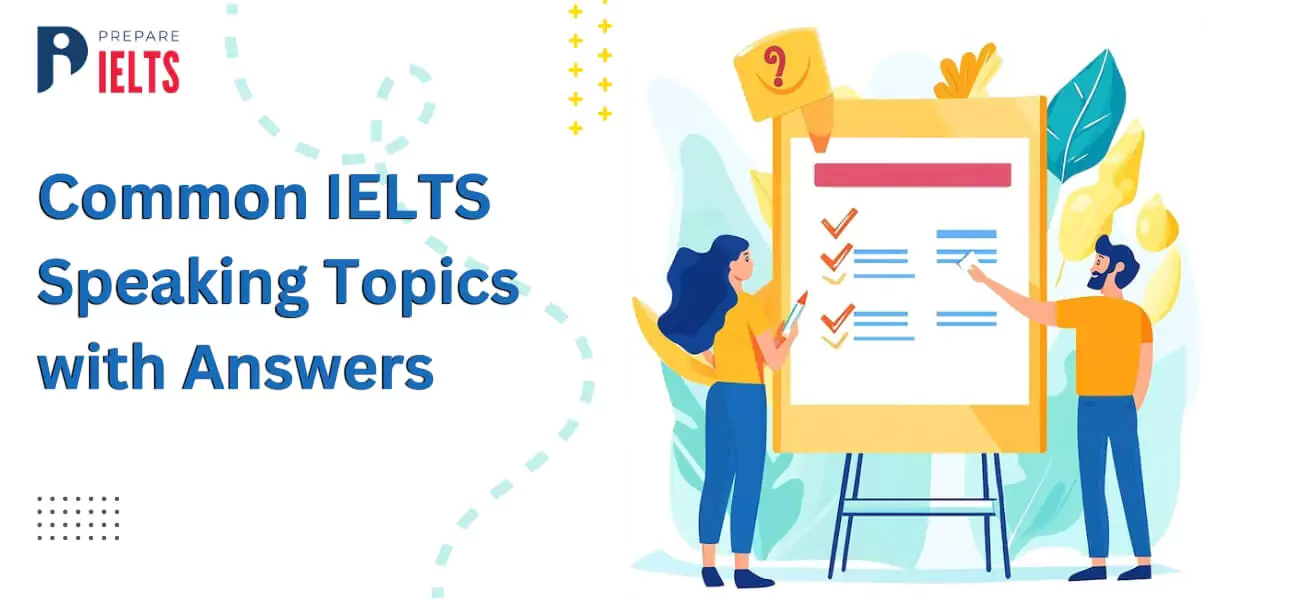
Overview
Are you preparing for the IELTS to study in English-speaking countries? While preparing for the IELTS, a question pops up in students' minds: Is IELTS easy or hard?
The quest to understand whether IELTS is easy or hard depends on various factors that include personalised preparation, identifying specific obstacles, understanding the focus area, setting expectations and much more. However, determining “Is IELTS difficult” depends on students’ will to learn and work for it as well as their skills; for example, some find the speaking section difficult, while for others, it is a piece of cake.
This blog will help you understand the difficulty level of IELTS and the dynamics of different exam sections. By understanding each section, students can better navigate their IELTS exam and secure an impressive band score. So, let’s get to it!
Is IELTS Easy or Hard?
The main question for a student wanting to appear for the IELTS exam is, ‘Is IELTS easy or hard?’ The answer is simple: It all boils down to the students and how much effort they put into their preparation.
However, if you have a habit of conversing in English and inculcating the English language in your daily routine, then appearing for the IELTS exam would be a child’s play for you. The entire motive behind the IELTS exam is to check if the students are eligible enough to study abroad in the English language. If you find it difficult, the easiest way to navigate through the exam is to get familiar with all kinds of questions and practise them as much as possible.
The sections ahead will provide more tips for tackling each section of the IELTS exam.
Tips to Tackle Each Section of IELTS Exam
For preparing for the IELTS exam effectively, you can consider the following tips:
-
Familiarise yourself with every segment of the IELTS test. Strengthen your letter-writing skills in both the formal and informal formats.
-
It is vital to recognise that some of the IELTS sections require visual literacy (charts, graphs, etc.). Understand the types of questions in each section and for which skill recognition it is given.
-
Evaluate your strengths and weaknesses in the practice tests. Focus on areas that need improvement, which will help you improve your overall score band.
-
Develop a well-organised study plan and follow it consistently for thorough preparation.
-
Practise regularly for your exam, using mock tests to assess your preparation.
These are some of the common tips. Now that we are aware of them, let’s explore the individual tips of the exam.
IELTS Speaking
The IELTS speaking exam is 11-14 minutes long. It is the only section that requires the student to interact directly with the examiner. This section evaluates the student’s fluency in English. Therefore, it can prove challenging for students who are not habitual of conversing in English on a regular basis. Further, the speaking section is divided into three main sections; they are-
-
Part 1: This is the initial phase of the exam, during which the examiner talks with the students about general topics, such as their family, friends, hobbies, and more, to build rapport.
-
Part 2: The next step is for the students to receive the cue card topics and a minute to prepare for them. After that, they will be given two minutes to speak on the given topic.
-
Part 3: The last phase consists of the examiner asking questions related to the cue card topic. This allows the students to share their ideas and communicate freely.
The biggest mistake students make while attempting this section is that they are unable to answer all the questions precisely. Therefore, it is important to use the minute given with precision and wisely. However, you might face various challenges, such as telling the story briefly using different tenses. Make sure to use a diverse range of language and vocabulary, as this is one of the keys to scoring a good band score in the speaking section.
IELTS Reading
In the IELTS Reading test, you are given 40 questions and 60 minutes to complete all the questions. You are required to read approximately 2000 words within this limited time frame, which can prove tricky for a few students who are not in the habit of reading in general. This section contains diverse questions designed to assess the students' reading capacity; it is essential to know that the IELTS exam has two parts, IELTS general and IELTS academics, which have different reading formats.
However, the issue that arises for the students in this particular section is related to the lack of vocabulary. To overcome this, you should read more English books, magazines, and newspapers, which will help you enhance your vocabulary and scanning-skimming skills.
-
Create a checklist covering various questions, and make sure to integrate the tricky questions for your practice.
-
One small trick is to read the questions prior to the passage given to save time; that way, you will find the answers quickly.
-
Another way to increase your reading speed is to read longer and trickier passages within the time frame given in the examination. This will help you navigate through the reading section faster and more efficiently.
-
Underlined lines will help you identify relevant text portions, whether the section is challenging or easy.
-
If you come across certain unfamiliar words, don't worry; try to understand the sentence's context and its meaning.
IELTS Writing
In the IELTS Writing module, students are required to complete not one but two writing tasks within 60 minutes. This time can be further divided into 20 minutes for Task 1 and 40 minutes for Task 2. The majority of the students find the IELTS writing section to be the most challenging section of the entire IELTS exam; this is because they have to adhere to the work limit, give thorough answers, and complete the section within the time limit, which proves to be a little overwhelming for the students.
Like the reading section, the writing section is different for both the IELTS General and IELTS Academic tests. The tasks include-
Writing Task 1- This part entails describing the information given in charts, graphs, and other ways, or the other task includes writing a letter on a given topic or subject matter.
Writing Task 2- This section is more focused on writing an argumentative essay or presenting your point of view on a specific subject matter. It could be a general topic or a recent world problem.
The most crucial aspect of each writing section is time management, which proves to be a major challenge for most students. In addition, the writing task requires the students to meet the minimum word count. While writing, you should also focus on your use of vocabulary, which can only be achieved through consistency in practising.
Now that we are aware of what the writing section consists of, let’s have a look at how you can improve in both sections-
-
Writing Task 1
First and foremost, keep a calm head and read all the questions clearly and understandably within 5 minutes to better understand them. Then, time yourself during practice and try to complete your answers within 10-12 minutes while adhering to the word limit. Lastly, dedicate the remaining 2-3 minutes to looking through the written data, looking for all the grammatical errors, spelling mistakes, and anything else.
-
Writing Task 2
This is a slightly longer section, as you have to present your thoughts and points of view. Therefore, it is advised to devote the initial five minutes to reading the question properly and creating a structure and points about the topic in your head. Dedicate the rest of the 25-30 minutes to write whatever is asked of the paper, and then lastly, in the end minutes, go through everything to rectify any mistakes, if any.
IELTS Listening
The IELTS Listening section is 30 minutes at the maximum; apart from the thirty minutes, 10 additional minutes are given to the student for transferring answers in the answering sheet. The IELTS listening section primarily contains 4 parts that need complete attention as on that basis; the students have to answer the questions.
The listening section is often found to be challenging for the students; there are several reasons for the same; some of them are-
-
Firstly, the recording is played only once, and the student’s attention is required as there will be no second chance.
-
Secondly, the section has four parts, and each part’s difficulty level increases, which causes tension among the students.
-
Concentration plays a vital role in this section as, if attention is not given properly, they will have to leave the questions, ultimately affecting the overall band score.
However, if the student has managed their time from the beginning, then nothing will be an issue. Apart from time management, proper and consistent practice is a mandate, as this skill can only be developed over time. Familiarise yourself with different kinds of accents to become habitual to them and avoid any challenges during the exam. Exposing yourself to English music or watching English movies or web series can also help you understand English better and improve your performance.
Register Now, for a free Mock test - Join Today!
Factors for Making IELTS Easier
Some key factors can be considered while determining whether IELTS easy or hard; those factors are as follows-
British English Fluency
It's interesting to note that IELTS positions itself as a globally accepted standardised test of English. Nonetheless, British English is used in the majority of the test sections. Additionally, one British speaker will undoubtedly be on the audio track throughout the listening portion. Therefore, applicants should practice speaking British English and become fluent in the accent to be safe.
Use of Everyday English
It can be a good idea for applicants to review letter writing for the general training exam. They need to practice writing letters in both professional and casual styles.
Awareness of Charts, Tables, etc
Visual literacy is also required for a significant portion of the IELTS exam. Applicants must read tables, graphs, charts, and other graphics proficiently. The exam can get simpler if a candidate is knowledgeable about these topics. In addition to understanding what elements make the IELTS exam easier, students need to grasp a few strategies for dealing with the challenges presented by the exam's different portions. A thorough explanation of how to tackle the exam's difficulty level is provided below, which will provide an answer to the question, "Is IELTS easy?"
Difference between IELTS General and IELTS Academics
-
The difficulty of the IELTS academic and general training versions is similar. Rather than asking themselves if the IELTS is simple, applicants would be better to prepare similarly for both.
-
The speaking and listening portions of these two examinations are the same. The writing and reading portions, however, are different. Furthermore, the number of questions on both tests is the same, and the duration is the same.
-
Additionally, there is no shortcut to studying for these tests. Applicants need to work equally hard and gauge their level of understanding. The primary change between the two tests is that applicants must demonstrate their working knowledge of English in the general training section.
-
The examiner assesses a candidate's capacity to clarify complex concepts during the academic exam. The general training test is easier, depending on the test layout.
-
Furthermore, there are differences in the scoring technique for the reading parts of both of these tests. An applicant will receive an 8 band score in academic reading if they score 37–38 out of a possible 40 raw points. In contrast, a candidate will receive an 8.5 band score in general training if they score between 37 and 38 out of a possible 40 raw points.
Tips for Improving IELTS Band
Improving your IELTS exam score is easy but requires consistent efforts and an approach. We have some valuable tips that will help you enhance your performance in all exam spectrums. After utilising these tips yourself, you can decide whether IELTS is easy or hard.
-
The first and foremost thing to do is to understand the IELTS exam pattern. That way, you will be more aware of which section needs how much time based on your strengths and weaknesses.
-
Consistent efforts and practice are key to success. Indulge in daily practice by reading articles, watching any movie or television show in English, listening to English podcasts, having a speaking partner with whom you can practice your English speaking, and continuously writing practice.
-
You can work on your grammar and vocabulary by practising and gaining a deeper knowledge of English grammar topics. A good vocabulary will definitely positively impact your IELTS band score.
-
For the Speaking section, pronunciation and fluency are the keys to achieving a good score. You can achieve this by choosing a skilled partner and practising speaking with them in English; this will help with fluency. You can master pronunciation and accents with the help of Google and movies. Another thing that can be done is record yourself and listen to it; you will learn where you are lacking and work on it.
-
Understand your mistakes and weaknesses with the help of practice tests and try to improve from them. Understanding your weaknesses and shortcomings helps you convert them into strengths and improvement.
Conclusion
To summarise, the blog discusses the detailed aspects of the difficulty levels of the IELTS exam along with tips that you, as a student, can embed to work on your areas of weaknesses. Please note that the difficulty level of IELTS is very subjective and differs according to every student; some might find the speaking section difficult, while others may find the writing difficult. It all boils down to the person’s command and proficiency over the language. So, preparing for the paper with a proper plan is essential, as well as indulging in the right classes and getting appropriate guidance.
If you want to get further details on preparing for IELTS or, mainly, the IELTS section, you can contact the Prepare IELTS exam (PI) expert counsellors for additional guidance. Our team of education experts is dedicated to providing you with the best test material and guidance to ace the IELTS exam. You can get a one-on-one counselling session and an IELTS online practice test via our platform. Contact us at info@prepareieltsexam.com or call us at +91 9773398388 for further queries.
FAQs
No, each person's experience with the IELTS exam will differ in terms of difficulty. Perceived difficulty may vary depending on preparation, language ability, and familiarity with the exam format.
Sections on Speaking, Reading, Writing, and Listening present particular difficulties. Depending on their proficiency in a language and level of familiarity with certain activities, some test takers may find some portions more difficult than others.
You may determine your degree of comfort and probable difficulties on the IELTS exam by evaluating your own language proficiency, practising with sample exams, and being aware of the requirements for each subject.
The IELTS exam's difficulty level is usually constant; however, there may be changes to the test's format or content. It is recommended to stay updated about any expected changes in 2024 by visiting the official IELTS resources or contacting the exam officials.
Indeed. The level of difficulty that an individual experiences on the IELTS exam may be considerably influenced by strategic and focused preparation, which includes familiarising themselves with the test structure, practising specific areas of weakness, and employing pertinent study resources.
Latest Blogs
-

IELTS Score for Canada: Minimum IELTS Requirement for Canada 2025
2024-09-27 18:24:14
-

IELTS Apology Letter for General Training: IELTS Writing Task 1
2024-09-25 16:38:03
-

Minimum IELTS Score for Australia: Student Visas, Universities, and PR in Australia
2024-09-23 18:09:51
-

Common IELTS Speaking Topics with Answers
2024-09-20 18:21:56
-

Describe a foreign culture that you like: IELTS speaking cue card
2024-09-18 16:14:11
-

Describe a Rainy Day IELTS Speaking cue card
2024-09-18 11:11:32
-

Describe a new law you would like to introduce in your country IELTS cue card
2024-09-13 17:17:46
-

Describe your favourite weather: IELTS cue card
2024-09-11 18:01:28
-

Describe an enjoyable journey by public transport: IELTS cue card
2024-09-09 18:05:45
-

Step-by-Step Guide to IELTS Registration in India for the Year 2024 & 2025
2024-09-07 12:59:51


